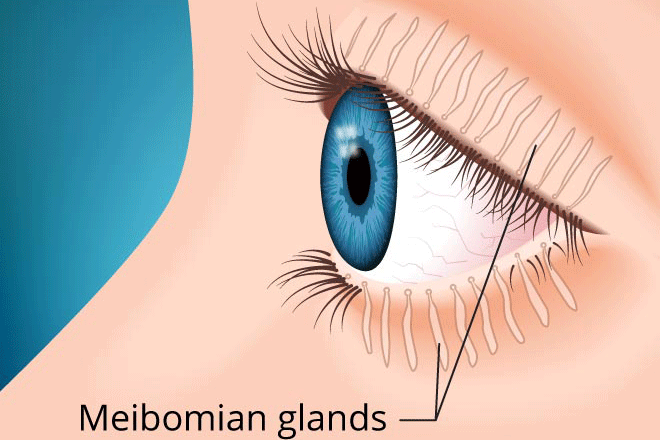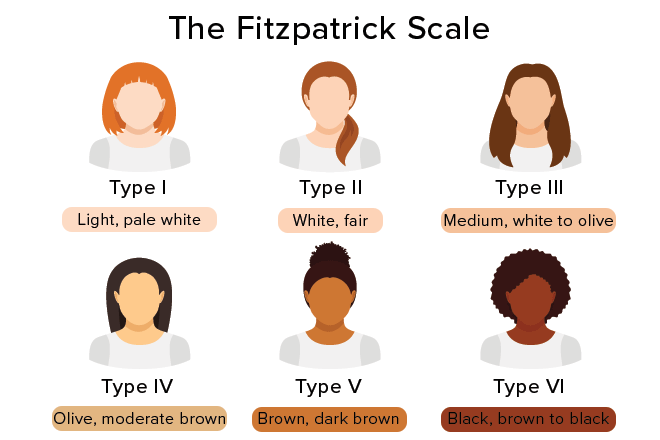How Intense Pulsed Light (IPL) Treatment May Help Dry Eye Disease

What is intense pulsed light (IPL) treatment for dry eyes?
IPL treatment uses pulses of light to treat a common cause of dry eye — meibomian gland dysfunction. It liquifies hardened oil that can plug the gland, clearing it and stabilizing the tear film. It also kills bacteria and mites and decreases inflammation by closing abnormal blood vessels.
The combination of inflammation, plugged meibomian glands and bacteria or mites can cause an unstable tear film. In turn, this can lead to:
How does IPL treatment for dry eyes work?
An eye doctor uses a device that pulses light in the 500 nm to 1,000 nm wavelength over the skin around the eyes. This is a broad band of light, so it is not as harsh on the skin as a laser, which is a narrow and focused beam of light.
Inflammation is believed to play a significant role in causing chronic dry eye. Doctors believe that dry eye is driven by a cycle of tear film instability, inflammation and decreased tear production.
Dry eye is typically caused by:

Aqueous tear deficiency– This can occur when the lacrimal gland does not produce enough aqueous (watery) tears.
Meibomian gland dysfunction – This can occur when the meibomian glands are not functioning properly and the oily layer above the watery tears is deficient. This causes the tears to evaporate too quickly. It may result in eyelid inflammation or blepharitis.
IPL treatment addresses the issues commonly seen in dry eyes due to meibomian gland dysfunction. It does this by working on several different aspects of the condition:
Warms up the hardened oil plugging the meibomian gland (the gland that produces the oily layer of the tear film), preventing the tear film from evaporating
Decreases inflammation by closing up abnormal blood vessels
Eliminates eyelash mites (Demodex) and bacteria that infect the eyelid and meibomian glands
Promotes collagen synthesis at the cell level
Adjusts the concentration of tears to more normal levels
IPL therapy has been shown to be effective for treating blepharitis as well.
READ MORE: Other types of treatment for dry eye syndrome
What is the procedure for IPL treatment and how do I prepare?
IPL treatment is an in-office procedure. It does not hurt and, when performed properly, does not damage the eyes.
Once you have been scheduled for the procedure, your eye doctor’s office may advise you to avoid certain things for a few days before you come in. This includes protecting your skin from the sun and avoiding harsh skin exfoliation. The doctor may also ask you to avoid taking certain medications before the treatment.
SEE RELATED: How can the sun damage your eyes?
IPL treatment typically lasts about 20-30 minutes. Although each office has some variation, the procedure involves the following general steps:
Protective, opaque goggles that serve as eye shields are placed on the eyes.
A gel (that is commonly used for ultrasound) is spread around the eyes, eyelids and cheeks. This makes the treatment more effective and also protects the skin by spreading out the light energy.
Flashes of low-level light are pulsed in the area beneath the eyes, the area next to the eyes (toward the ears) and on the cheeks.
This procedure is repeated on the other side of the face.
The goggles and gel are removed.
The meibomian glands may be expressed to unclog the openings of the glands.
Pain relieving eye drops may be given.
What is the aftercare for IPL treatment?
After the treatment session, a sun-protection cream will be applied around the eyes. For the first two days after the treatment, exposure to the sun should be avoided. This can be done by staying out of the sun as well as by applying sunblock and using a hat when outdoors.
How many IPL treatments are needed?
In general, it takes approximately four separate IPL sessions to effectively treat dry eye syndrome caused by meibomian gland dysfunction. Maintenance treatments may also be scheduled as needed. The treatments are typically scheduled as follows:
1st treatment
2nd treatment at 2 weeks
3rd treatment at 4 weeks
4th treatment at 7 weeks
How effective is IPL treatment for dry eye?
A 2015 study investigated the effectiveness of IPL treatment for dry eye caused by meibomian gland dysfunction. On average, patients participated in seven treatment visits and four maintenance visits.
This study found that doctors saw an improvement in tear break up time, the time it takes for dry spots to appear in the tear film after a full blink. Over 90% of patients who underwent IPL treatment reported that they were satisfied with the results.
Another 2021 study, published in Clinical Ophthalmology, found that 1 in 4 patients reported that they no longer had dry eye symptoms after completion of 4 months of IPL treatment. Three-fourths of the participants in the study reported some improvement.
What are the side effects and risks of IPL treatment?

Intense Pulsed Light (IPL) treatment is typically recommended for Fitzpatrick skin types 1-4.
In the 2015 clinical study, the most common side effects were swelling and redness. These were reported by about 10% of patients. The study did not find any other serious side effects and reported that it is an overall safe and relatively painless procedure.
It is important to note that darker skin tones must take precaution with IPL treatments. This is because IPL treatment may cause loss of skin pigmentation in darker skin. It is generally recommended that only Fitzpatrick skin types 1-4 undergo this procedure.
Is IPL treatment different from low level light treatment (LLLT)?
IPL treatment is sometimes used in combination with low level light treatment (LLLT). IPL treatment provides heat in addition to the light, while LLLT uses only light therapy.
Because of this, LLLT can be applied to the delicate upper lid, which is not possible with IPL treatment. When both procedures are performed, IPL treatment is typically followed by a session of LLLT. The combined effects of the two treatments have been found to help some patients.
How do I know if IPL treatment is right for me?
It is important to have an evaluation and speak to your eye doctor about your medical history, as well as any medication or supplements you may be taking. Your eyes should be healthy, and the skin that will be treated should not have injury, moles or other issues.
If you are a good candidate for IPL treatment, discuss the fee for the procedure with your doctor’s office, as it will vary with the type and number of visits. IPL treatment is not covered by insurance.
If you are experiencing symptoms of dry eye disease, the first step is to schedule a comprehensive eye exam.
Intense, pulsed light for dry eye syndrome. Cataract & Refractive Surgery Today. April 2009.
IPL + thermal pulsation: A thorough approach to dry eye. Ophthalmology Times. November 2018.
Understand the expanding role of IPL in dry eye disease. Ophthalmology Times. September 2019.
Dry eye. National Eye Institute. April 2022.
Efficacy of intense pulsed light treatment for moderate to severe acute Blepharitis or blepharoconjunctivitis: A retrospective case series. Turkish Journal of Ophthalmology. April 2021.
Intense pulsed light (IPL) therapy. American Academy of Ophthalmology. EyeWiki. October 2021.
Light therapy: Which is better, one or two? Review of Optometry. February 2021.
Intense pulsed light treatment for dry eye disease due to meibomian gland dysfunction; a 3-year retrospective study. Photomedicine and Laser Surgery. January 2015.
Safety and efficacy of broadband intense pulsed light therapy for dry eye disease with meibomian gland dysfunction. Clinical Ophthalmology. October 2021.
Page published on Wednesday, June 22, 2022






